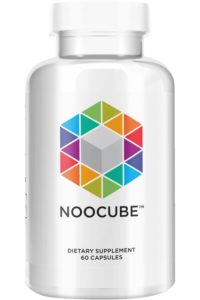
Natural nootropics are often dismissed by potential users because they don’t offer the same power or potency that synthetic nootropics do. But before you do the same, you should consider the clinical research and studies that reveal just how beneficial natural ingredients can be for both your body and mind.
Below, we’re discussing 5 natural nootropic ingredients you should know for their safety and proven effectiveness. By the end of this article, we’re convinced you’ll give the natural ingredients (and possibly even NooCube ™ and its synergistic blend of them) a shot!
NooCube ™ – Ingredients
With a formula created by top neuroscientists, Noocube ™ combines the purest, safest and most powerful brain enhancing ingredients available:
Huperzine-A
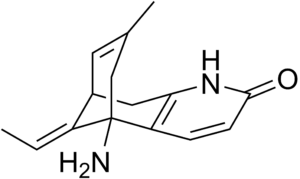
Huperzine-A is an extract from a Chinese club moss plant that is used to break down the learning neurotransmitter acetylcholine. Acetylcholine is a chemical used by nerves to communicate not only in the brain but in the muscles and other areas of the body as well.
Huperzine-A works as an acetylcholine (AChE) inhibitor and ensures that levels of this chemical don’t fall in the body. By doing so, users experience improved mental clarity, better concentration, superior memory capacity, and protection against age-related memory impairment. In fact, this ingredient is commonly used for Alzheimer’s patients to increase alertness, energy, and memory.
Cat’s Claw
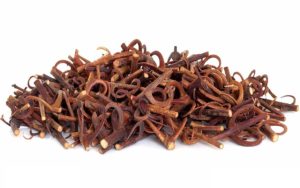
Straight from the Amazon rainforest, Cat’s Claw is naturally derived from a vine known as Uncaria tomentosa. Its primary use is not for memory or concentration but rather for conditions such as osteoarthritis and rheumatoid arthritis. It is one of the most popular herbs in the United States and is used to treat a variety of conditions beyond those already listed.
In addition to these primary uses, cat’s claw is well-known for its ability to stimulate the nervous system, enhancing the body’s natural ability to combat environmental stress that often causes cell damage. By repairing the brain and body’s cells in this way, cat’s claw improves brain health and cognitive performance, especially as people age.
Bacopa Monnieri
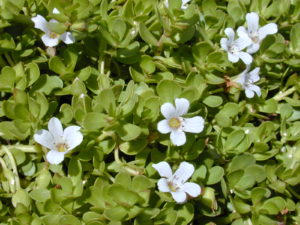
Bacopa is an Indian herb rich in compounds called bacosides. These compounds are thought to not only repair damaged neurons but to promote new nerve growth as well.
Bacopa’s ability to improve cognition is thought to be a result of reduced anxiety. Because it improves neuron communication with the brain, users both old and young benefit from improved mental performance and memory formation. Because Bacopa monnieri functions as an adaptogen, some individuals may experience a decreased capacity to work after taking it.
The herb is widely used in treating symptoms of dementia and Alzheimer’s, giving it a positive influence over age-related cognitive decline.
Oat Straw
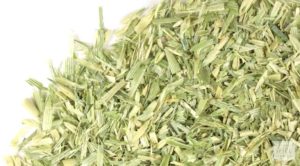
Cultivated from wild green oats, oat straw (also known as Avena sativa) has been used as a brain supplement in folk medicine since some time in the Middle Ages.
The herb is widely known for its ability to soothe both the brain and nervous system by increasing alpha-2 waves in the brain. By also controlling inflammation common within artery walls, oat straw increases blood flow to the brain, prompting users to become more awake and alert as a result.
L-Theanine
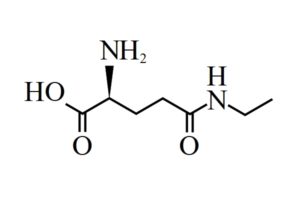
Naturally found in both green tea and black tea, L-theanine is an amino acid that relieves stress and stimulates neurotransmitters in the brain. This simultaneously relaxes the body while creating a relaxed, yet alert state that allows users to focus without natural stressors.
L-Tyrosine
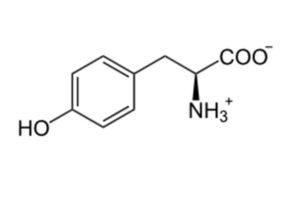
L-tyrosine is another amino acid that plays an essential role in the creation of dopamine and noradrenaline, two neurotransmitters that also support mental alertness and focus. This allows the substance to reduce the brain damage and other bodily harm associated with stress and fatigue while enhancing focus, giving it its role in many nootropic substances.
Natural Ingredients are Powerful in Nootropics…
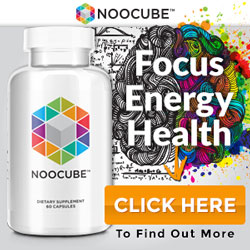
…and while natural nootropics may not hold the same potency as synthetic nootropics, protecting your health is worth the trade off. And luckily, all of the above ingredients combine in NooCube ™.
NooCube ™ is a nootropic blend that supports and enhances focus, mental speed, and memory. By blending a unique combination of vitamins, amino acids, and other building blocks for a healthy brain, NooCube ™ supports your memory, learning, and repairs brain damage, giving you all of the benefits a nootropic should.
Find out more about NooCube ™ to decide if it offers the benefits you expect from your nootropics!
A detailed composition of NooCube (TBSS ID: SU4C9960)
Nootropics: Are Their Benefits Backed by Science?
With nootropic popularity skyrocketing more than before, skeptics and enthusiastic supporters alike are wondering the same question: Are the benefits being touted by many actually backed by science?
A quick search of the Internet will reveal support for both sides of the debate. However, it’s simple to see that when it comes to nootropics, though there hasn’t been extensive research completed, that which has confirms the countless benefits nootropics users expect.
Is the Idea Behind Nootropics Plausible? Research Says Yes
Nootropics are part of a category of drugs known as performance and image enhancing drugs (PIED). This category of drugs is known to enhance everything from memory and cognition (which is the specific role of nootropics) as well as athletic performance and sexual performance too.
For the interest of this article, we’re only concerned with the idea of nootropics as beneficial for memory and cognition. And to be sure, research reveals it’s likely that specific chemicals can target metabolic or nutritional components of the brain functions to enhance functioning in particular areas (whether in neurotransmitters, neurons, synaptic connections, or otherwise).
While most of the research conducted on nootropics is on their ability to improve memory functioning in individuals with Alzheimer’s disease or other medical conditions, additional research on healthy individuals shows great promise. This is particularly true of sought-after benefits such as improved learning and memory performance, protection against cell damage, and the ability to maintain task focus.
A Sample of Established and Recent Studies Reveals the Multitude of Promised Benefits in Action
From 1972 to as recently as 2015, nootropics have been clinically tested and confirmed for their positive benefits. In fact, emerging research continues to confirm both the present and future preventative benefits of the supplements, making them ideal for young, middle-aged, and elderly users alike.
Much of the early research focused on racetams and in particular Piracetam, with more recent study focusing on “smart drugs”. However there are also a number of studies into natural nootropics ingredients.
For example, a 1999 study on huperzine-A, a key ingredient in NooCube, reveals that after being given huperzine for 4 weeks, young adolescents demonstrated improved learning and memory performance when compared to placebo groups. Another study from 2011 revealed that l-tyrosine, an amino acid, improved cognitive flexibility (i.e. the ability to switch between thinking of one concept to another) when compared to a placebo population.
Many potential nootropic users do so for the preventative or treatment benefits as well. Substances like Cat’s Claw have been found to destroy different types of free radicals in the body, preventing cell damage that can cause cognitive disease or premature aging. Some other nootropics, such as Alpha GPC, have been found as recently as 2013 to provide consistent improvements for Alzheimer’s patients on cognitive tests after taking the substance just three times daily for 180 days.
Additional research continues to emerge regarding these demonstrated benefits, amongst others. This convinces new individuals each day to create a nootropic stack for their own use.
Final Thoughts: Research Supports the Use of Nootropics in Both Healthy and Unhealthy Individuals
According to both research and common belief, nootropics hold promise for improved cognitive functioning. And with a growing body of research to back it up, there is great reason to explore the use of nootropics for your own benefit.
In consideration of existing research, it appears nootropics are most useful in treating neurological disease and repairing damage to the brain. In addition, there is much to be said about increased cognitive performance both in healthy adolescents and cognitively declining elderly individuals as well.
When combined with healthy habits such as proper sleep, exercise, and diet, nootropics are thought by many to be an effective way to improve mental functioning, no matter your age or current mental state.
And with the right research into which types of nootropics best suit your needs, you’ll soon have the ideal stack to elevate your cognitive functioning and maintain brain health for years to come.
Availability
The NOOCUBE ™ is available in countries such as England, Canada, Australia, Spain, Portugal, Deutschland, Austria, France, Italy, Netherlands and Belgium and many others around the world.
Copywrite
This is an open access article distributed under the Creative Commons Attribution License, which permits unrestricted use, distribution, and reproduction in any medium, provided the original work is properly cited.
References & External links
- Claus, J. J., et al. “Nootropic drugs in Alzheimer’s disease Symptomatic treatment with pramiracetam.” Neurology 41.4 (1991): 570-570.
- Sun, Qing-Qi, et al. “Huperzine-A capsules enhance memory and learning performance in 34 pairs of matched adolescent students.” Zhongguo yao li xue bao= Acta pharmacologica Sinica 20.7 (1999): 601-603. “CONCLUSION: The Hup (huperzine-A) capsules enhance the memory and learning performance of adolescent students.“
- Steenbergen, Laura, et al. “Tyrosine promotes cognitive flexibility: evidence from proactive vs. reactive control during task switching performance.” Neuropsychologia 69 (2015): 50-55. “Tyrosine (TYR), an amino acid found in various foods, has been shown to increase dopamine (DA) levels in the brain. Recent studies have provided evidence that TYR supplementation can improve facets of cognitive control in situations with high cognitive demands.“
- Shi, Zhenhua, et al. “Neuroprotective effects of aqueous extracts of Uncaria tomentosa: Insights from 6-OHDA induced cell damage and transgenic Caenorhabditis elegans model.” Neurochemistry international 62.7 (2013): 940-947.
- Di Perri, R., et al. “A multicentre trial to evaluate the efficacy and tolerability of α-glycerylphosphorylcholine versus cytosine diphosphocholine in patients with vascular dementia.” Journal of international medical research 19.4 (1991): 330-341.
- PIED – Performance and Image Enhancing Drugs.











